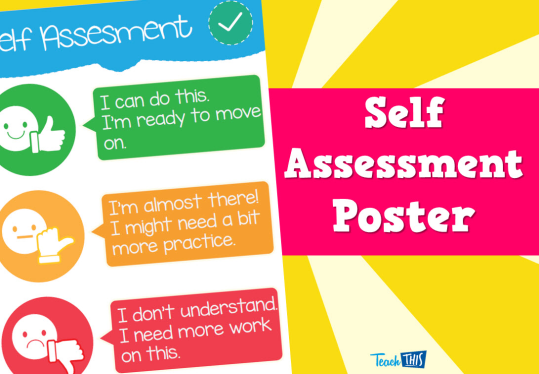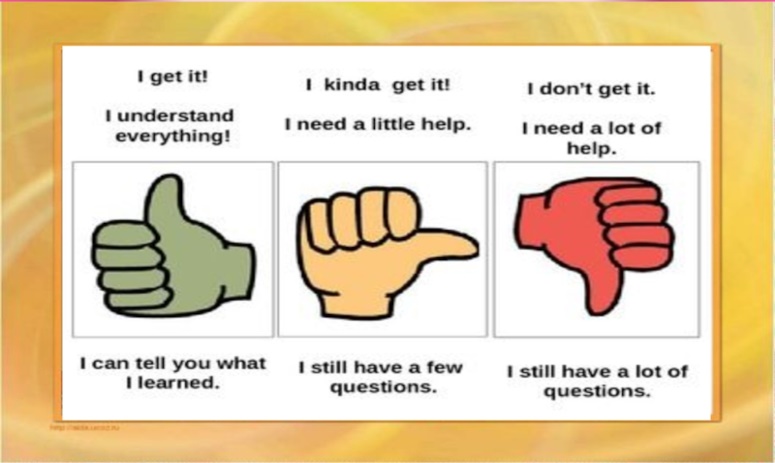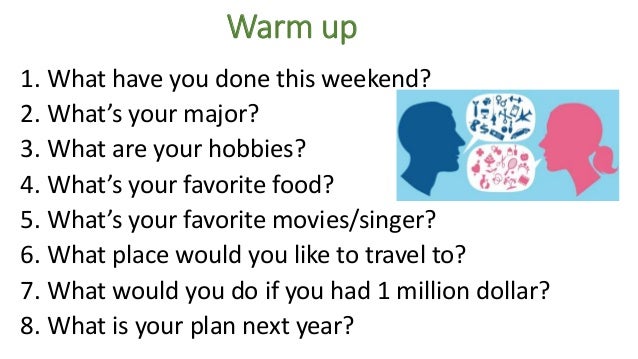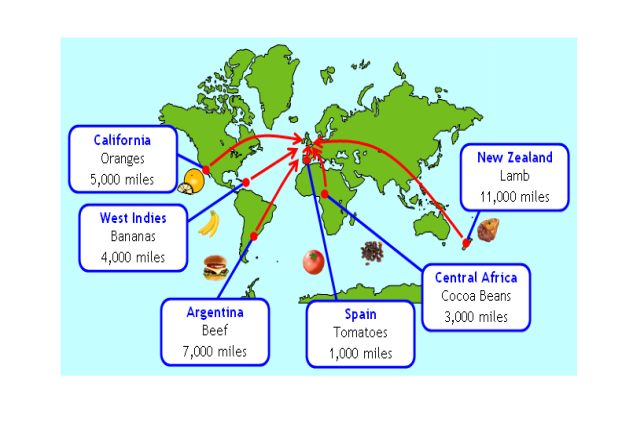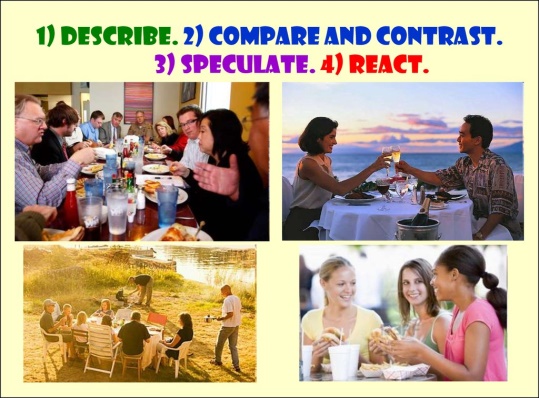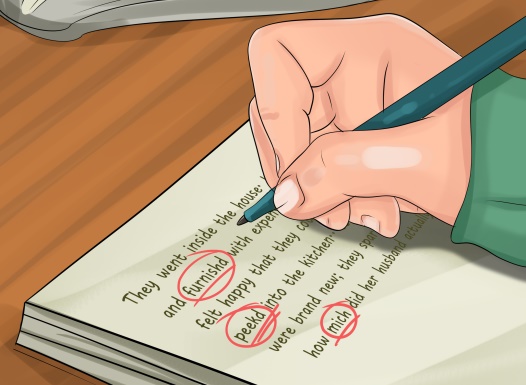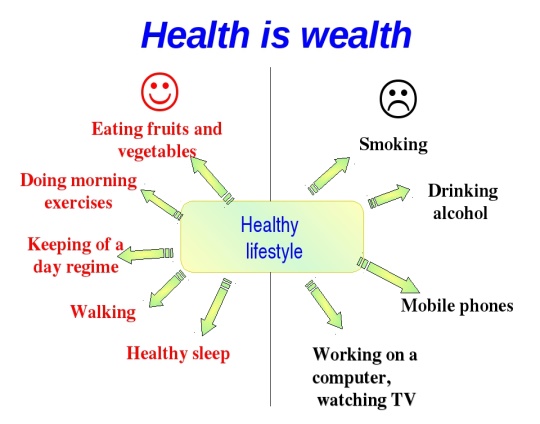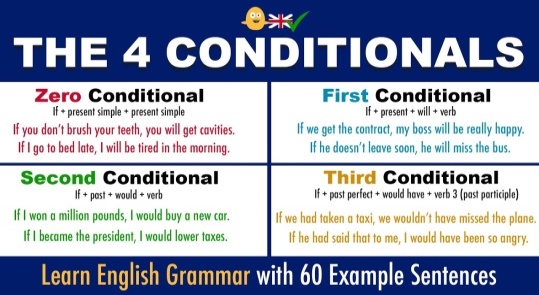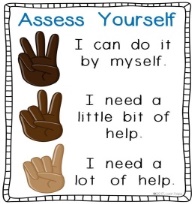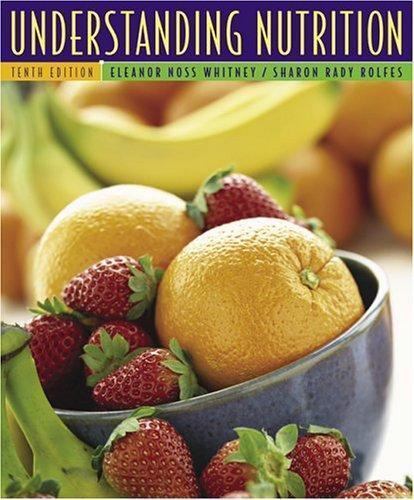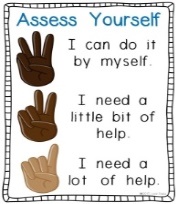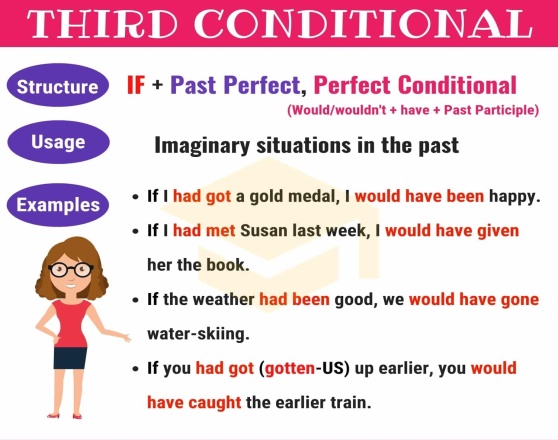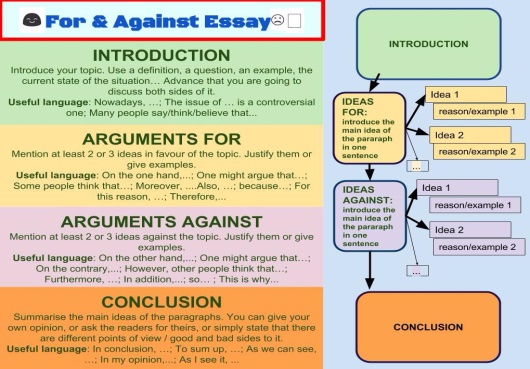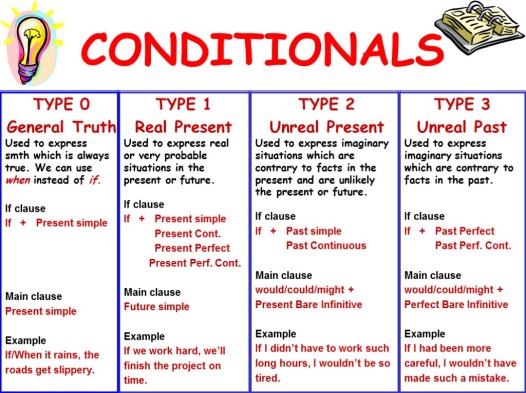Назар аударыңыз. Бұл материалды сайт қолданушысы жариялаған. Егер материал сіздің авторлық құқығыңызды бұзса, осында жазыңыз. Біз ең жылдам уақытта материалды сайттан өшіреміз
Жақын арада сайт әкімшілігі сізбен хабарласады

Бонусты жинап картаңызға (kaspi Gold, Halyk bank) шығарып аласыз


LP Gateway10 гум/humanity direction TERM 2
Дипломдар мен сертификаттарды алып үлгеріңіз!


Материалдың толық нұсқасын
жүктеп алып көруге болады
Short term plan: term 2
|
Unit: 3 Virtual reality |
Lesson 25 |
||
|
Teacher name: |
|
||
|
Date: |
|
||
|
Grade: 10 |
Number present: |
absent: |
|
|
Lesson title |
Virtual Reality. Words connected with transport and travel |
||
|
Learning objectives |
10.2.4.1 - implied meaning in unsupported extended talk on a wide range of general and curricular topics, including talk on a growing range of unfamiliar topics 10.3.2.1 - ask and respond with appropriate syntax and vocabulary to open-ended higher-order thinking questions on a range of general and curricular topics, including some unfamiliar topics 10.3.7.1 - use appropriate subject-specific vocabulary and syntax to talk about a range of familiar and some unfamiliar general and curricular topics |
||
|
Lesson objectives |
Learners will be able to: - pronounce and learn new words related to app development - talk about transport and trave |
||
|
Plan |
|||
|
Stages / Time |
Teachers actions |
Students actions |
Assessment criteria |
Resources |
|
Beginning of the lesson Warming-up
3 min. Pre-learning «Brainstorming» method 7 min. |
Organization moment : 1.Greeting. Ask about the weather. The teacher sets the lesson objectives, letting students know what to anticipate from the lesson. Warming up Where are you from? How old are you? What color is it? How many students are there in class? What day of the week today? Lead – In
|
The aim: To develop pupils speaking skills and create friendly atmosphere Efficiency: By wishing each other they feel better and feel the support of others Students of the class are listed. Students' attention is drawn to the lesson. Students say different words from the picture •Learners remember previous lesson vocabulary •Learners answer the questions |
The teacher to assess learners for their ability. “Good job! Well done!” Formative Assessment
Good job! Descriptor: - remembers the lesson passed Assessment criteria make basic statements related to personal information, people |
Pictures worksheet Picture |
|
Middle of the lesson Presentation part. 30 min |
Ex:1 P:32 • In pairs, students look at and discuss the photos using as many of the words in the box as they can, e.g. rocket: spacecraft, take off; high-speed train: get on/off, passenger, platform; traffi c jam: motorway. Elicit some ideas from students around the class . Ex: 2 P: 32 • Ask students to match words in exercise 1 with the defi nitions. Check their answers Ex:3 P: 32 Play the track for students to listen to six short travel announcements. Ask students to choose the correct alternative. Elicit answers from students around the class. See p173 for the audioscript for this exercise Ex: 4 P: 32 Ask students to choose the correct alternative in each sentence, using the dictionary entries to help them Ex:5 P: 32 In pairs, students take it in turns to ask and answer the questions. In a less confi dent class, students can make notes on their answers before doing this as a speaking activity. Elicit answers from students around the class Conclusion during the lesson some tasks differentiated by outcomes of the students and by their abilities. |
• Learners work with a partner. Talk about the photos using these words ANSWERS Students own answer • Learners match the words in 1 with these definition ANSWERS 1 crew 2 traffi c jam 3 theUnderground subway/ tube 4 spacecraft 5 take off 6 land 7 gate • Learners listen to six short travel announcements. choose the correct alternative. ANSWERS 1 stand away from the edge of the platform 2 shouldn’t 3 shouldn’t 4 a, West 5 need 6 bags • Learners read the dictionary entries. Then choose the correct alternative. ANSWERS 1 trip 2 voyage 3 Travel 4 journey 5 trips 6 voyages 7 travel 8 trip |
Descriptor: - work with a partner. - work with a partner. Total: 3 point
Self assessment Differentiation: «Verbal support» method is used to help Ss use new words in the sentences. Descriptor: - listen to six short travel announcements Total: 3 point Descriptor: - read the dictionary entries. Then choose the correct alternative. Total: 3 point -Make CCQ questions Yes / No |
Card Worksheet Students book |
|
End of the lesson 5 min |
FEEDBACK Learners provide feedback on what they have learned at the lesson. Ex: P: Home task: Write the days |
|
Poster Success
|
|
Short term plan: term 2
|
Unit: 3 Virtual reality |
Lesson 26 |
||
|
Teacher name: |
|
||
|
Date: |
|
||
|
Grade: 10 |
Number present: |
absent: |
|
|
Lesson title |
Reading: GEN – Z |
||
|
Learning objectives |
10.3.7.1 - use appropriate subject-specific vocabulary and syntax to talk about a range of familiar and some unfamiliar general and curricular topics 10.4.8.1 - select and evaluate paper and digital reference resources to check meaning and extend understanding 10.6.7.1 - use a wide variety of simple perfect active and passive forms and a variety of perfect continuous forms on a wide range of general and curricular topics |
||
|
Lesson objectives |
Learners will be able to: - talk about the future using different tenses including the future continuous, future perfect simple and future perfect continuous - talk about transport and trave |
||
|
Plan |
|||
|
Stages / Time |
Teachers actions |
Students actions |
Assessment criteria |
Resources |
|
Beginning of the lesson Warming-up
3 min. Pre-learning «Brainstorming» method 7 min. |
Organization moment : 1.Greeting. Ask about the weather. The teacher sets the lesson objectives, letting students know what to anticipate from the lesson. Warming up Where are you from? How old are you? What color is it? How many students are there in class? What day of the week today? Lead – In
|
The aim: To develop pupils speaking skills and create friendly atmosphere Efficiency: By wishing each other they feel better and feel the support of others Students of the class are listed. Students' attention is drawn to the lesson. Students say different words from the picture •Learners remember previous lesson vocabulary •Learners answer the questions |
The teacher to assess learners for their ability. “Good job! Well done!” Formative Assessment
Good job! Descriptor: - remembers the lesson passed Point 1 Assessment criteria make basic statements related to personal information, people and objects |
Pictures worksheet Picture |
|
Middle of the lesson Presentation part. 30 min |
Ex:1 P:33 • In pairs, students discuss what they think the photo in the article shows. Elicit ideas from students in open class Ex: 2 P: 33 • Ask students to read the article quickly and answer the questions. Set a time limit of three minutes and remind students that it is not necessary for them to understand everything at this stage, they just need to answer the questions. Ex:3 P: 33 • Ask students to read the text more carefully and complete the gaps with sentences a–f. Elicit from students the key sentences, before or after the gap, which helped them decide on their answers. Ex: 4 P: 33 • Individually, students note down ideas on how useful they think the future transport projects mentioned in the text are before comparing their ideas with the rest of the class Conclusion during the lesson some tasks differentiated by outcomes of the students and by their abilities. |
• Learners work with a partner. Answer the question ANSWERS Students own answer • Learners read the article quickly and answer the question ANSWERS 1 Hyperloop 2 electric car, sports car, high-speed train, planes, supersonic air travel, self-driving car, flying cars, drones, elevator • Learners read the text again. Complete the sentences with gaps. ANSWERS 1 c (Our world is on the move.) 2 b (With his Tesla Motors company he has managed ...) 3 f (per capsule ... With no friction ...) 4 a (In the last 50 years, there has been a sharp increase in the number ...) 5 e (flying cars in our skies ... Soon, when you look up, you’ll see hundreds ...) 6 d (Maybe that’s one of the reasons why Japanese engineers … using a massive elevator …) • Learners think and compare ideas with your class. ANSWERS I think the Hyperloop is very useful as it is much faster than ordinary transport and more ecological. I think the self-driving car is useful because while you are on the move you can do anything you want. I think drones are very useful because they can do dangerous work more cheaply and safely than humans can. I think the lunar space elevator is a fascinating idea, but it’s not very useful |
Descriptor: - work with a partner. - answer the question Total: 3 point
Self assessment Differentiation: «Verbal support» method is used to help Ss use new words in the sentences. Descriptor: - read the text again. - complete the sentences with gaps Total: 3 point Descriptor: - think and compare ideas with your class. Total: 3 point -Make CCQ questions Yes / No |
Card Worksheet Students book |
|
End of the lesson 5 min |
FEEDBACK Learners provide feedback on what they have learned at the lesson. Ex: P: Home task: Write the days |
|
Poster Success
|
|
Short term plan: term 2
|
Unit: 3 Virtual reality |
Lesson 27 |
||
|
Teacher name: |
|
||
|
Date: |
|
||
|
Grade: 10 |
Number present: |
absent: |
|
|
Lesson title |
Grammar in context: Future simple |
||
|
Learning objectives |
10.3.6.1 - navigate talk and modify language through paraphrase and correction in talk on a wide range of familiar and some unfamiliar general and curricular topics 10.6.3.1 - use a variety of adjectives complemented by that, infinitive and wh clauses on a wide range of general and curricular topics |
||
|
Lesson objectives |
Learners will be able to: - identify and present comparing and contrasting ideas and cause/effect patterns - make complex comparisons between verb/noun phrases |
||
|
Plan |
|||
|
Stages / Time |
Teachers actions |
Students actions |
Assessment criteria |
Resources |
|
Beginning of the lesson Warming-up 3 min. Pre-learning «Brainstorming» method 7 min. |
Organization moment : 1.Greeting. Ask about the weather. The teacher sets the lesson objectives, letting students know what to anticipate from the lesson.
Lead – In
|
The aim: To develop pupils speaking skills and create friendly atmosphere Efficiency: By wishing each other they feel better and feel the support of others Students of the class are listed. Students' attention is drawn to the lesson. Students say different words from the picture •Learners remember previous lesson vocabulary •Learners answer the questions |
The teacher to assess learners for their ability. “Good job! Well done!” Formative Assessment
Good job! Descriptor: - remembers the lesson passed Point 1 Assessment criteria make basic statements related to future simple |
Pictures worksheet Picture |
|
Middle of the lesson Presentation part. 30 min |
Ex:1 P:34 a) Ask students to decide what tense the verb in blue is in each sentence. b)Ask students to complete the rules with will, be going to, the present simple or the present continuous. c)Ask students to look at sentences a–c and complete the rules 1–3 with will or the present simple. Ex: 2 P: 34 • In pairs, students look at the sentences and explain why will is used in each sentence. Elicit answers from different students around the class Ex:3 P: 34 • Ask students to decide if the underlined part of the sentence is correct. If it is not correct, they rewrite it. Check their answers Conclusion during the lesson some tasks differentiated by outcomes of the students and by their abilities. |
a) Learners look at the sentences. Identify the verbs in blue ANSWERS a be going to b present continuous c be going to d will e present simple b) Learners complete the rules. ANSWERS 1 be going to 2 be going to 3 will 4 the present continuous 5 the present simple c) Learners look at the sentences below and complete the rules ANSWERS 1 will 2 will 3 the present simple • Learners look at these sentences. Work with a partner ANSWERS 1 future fact 2 sudden decision 3 prediction based on opinion 4 prediction based on expectations 5 future fact 6 sudden decision • Learners rewrite the sentences ANSWERS 1 starts 2 ’ll 3 ’s going to rain 4 correct 5 ‘s taking 6 are going 7 are, doing 8 ’m going to eat 9 correct 10 ’s going to drop |
Descriptor: - identify the verbs in blue - complete the rules. Total: 3 point
Self assessment Differentiation: «Verbal support» method is used to help Ss use new words in the sentences. Descriptor: - rewrite the sentences Total: 3 point Total: 3 point -Make CCQ questions Yes / No |
Card Worksheet Students book |
|
End of the lesson 5 min |
FEEDBACK Learners provide feedback on what they have learned at the lesson. Ex: P: Home task: Write the days |
|
Poster Success
|
|
Short term plan: term 2
|
Unit: 3 Virtual reality |
Lesson 28 |
||
|
Teacher name: |
|
||
|
Date: |
|
||
|
Grade: 10 |
Number present: |
absent: |
|
|
Lesson title |
Developing vocabulary: Prefixes |
||
|
Learning objectives |
10.2.1.1 - understand the main points in unsupported extended talk on a wide range of general and curricular topics, including talk on a growing range of unfamiliar topics 10.3.2.1 - ask and respond with appropriate syntax and vocabulary to open-ended higher -order thinking questions on a range of general and curricular topics, including some unfamiliar topics 10.4.8.1 - select and evaluate paper and digital reference resources to check meaning and extend understanding |
||
|
Lesson objectives |
Learners will be able to: - identify and present comparing and contrasting ideas and cause/effect patterns - make complex comparisons between verb/noun phrases |
||
|
Plan |
|||
|
Stages / Time |
Teachers actions |
Students actions |
Assessment criteria |
Resources |
|
Beginning of the lesson Warming-up 3 min. Pre-learning «Brainstorming» method 7 min. |
Organization moment : 1.Greeting. Ask about the weather. The teacher sets the lesson objectives, letting students know what to anticipate from the lesson.
Lead – In |
The aim: To develop pupils speaking skills and create friendly atmosphere Efficiency: By wishing each other they feel better and feel the support of others Students of the class are listed. Students' attention is drawn to the lesson. Students say different words from the picture •Learners remember previous lesson vocabulary •Learners answer the questions |
The teacher to assess learners for their ability. “Good job! Well done!” Formative Assessment
Good job! Descriptor: - remembers the lesson passed Point 1 Assessment criteria make basic statements related to future simple |
Pictures worksheet Picture |
|
Middle of the lesson Presentation part. 30 min |
Ex:1 P:35 In pairs, students fi nd the prefi x in each word and think about what meaning the prefi x gives to the word. Ask them to match the prefi xes with the meanings 1–10. Ex: 2 P: 35 • Ask students to complete each sentence by adding one of the given prefi xes to one of the words in the box. Check their answers in open class and make sure they have spelt the words correctly Ex:3 P: 35 a) Ask students to make the negative form of the words using the prefi xes dis-, il-, im-, in-, ir- or un-. Provide dictionaries if necessary b) Students listen and check their answers. See p173 for the audioscript for this exercise. Ex:4 P: 35 Ask students to write three sentences using a negative word from exercise 3a in each sentence. Draw students’ attention to the example. Encourage them to use three different prefi xes. Conclusion during the lesson some tasks differentiated by outcomes of the students and by their abilities. |
a) Learners find the prefixes and match them with the meanings below ANSWERS 1 mis 2 post 3 under 4 over 5 inter 6 dis 7 re 8 co 9 sub 10 super Learners complete the sentences by adding the correct prefixes to the word. ANSWERS 1 disappeared 2 underpaid 3 misunderstood 4 sub-zero 5 rewrite 6 overbooked 7 superhuman Learners make the negative form of these words. Use the prefixes: ANSWERS disadvantage, disagree, unbelievable, incapable, incomplete, unexpected, unlikely, illogical, unnecessary, disobey, impatient, impossible, irregular, irresponsible, unsuccessful, invisible • Learners make three sentences using negative words from ex 3 ANSWERS Students own answer |
Descriptor: - find the prefixes - match them with the meaning Total: 3 point
Self assessment Differentiation: «Verbal support» method is used to help Ss use new words in the sentences. Descriptor: - complete the sentences Total: 3 point Descriptor: - make the negative form of these words Total: 3 point -Make CCQ questions Yes / No |
Card Worksheet Students book |
|
End of the lesson 5 min |
FEEDBACK Learners provide feedback on what they have learned at the lesson. Ex: P: Home task: Write the days |
|
Poster Success
|
|
Short term plan: term 2
|
Unit: 3 Virtual reality |
Lesson 29 |
||
|
Teacher name: |
|
||
|
Date: |
|
||
|
Grade: 10 |
Number present: |
absent: |
|
|
Lesson title |
Gateway to Life skills: Food miles. Exploding the Myth |
||
|
Learning objectives |
10.3.6.1 - navigate talk and modify language through paraphrase and correction in talk on a wide range of familiar and some unfamiliar general and curricular topics 10.4.8.1 - select and evaluate paper and digital reference resources to check meaning and extend understanding |
||
|
Lesson objectives |
Learners will be able to: - identify and present comparing and contrasting ideas and cause/effect patterns - use digital and paper resources to enrich vocabulary |
||
|
Plan |
|||
|
Stages / Time |
Teachers actions |
Students actions |
Assessment criteria |
Resources |
|
Beginning of the lesson Warming-up 3 min. Pre-learning «Brainstorming» method 7 min. |
Organization moment : 1.Greeting. Ask about the weather. The teacher sets the lesson objectives, letting students know what to anticipate from the lesson.
Lead – In
|
The aim: To develop pupils speaking skills and create friendly atmosphere Efficiency: By wishing each other they feel better and feel the support of others Students of the class are listed. Students' attention is drawn to the lesson. Students say different words from the picture •Learners remember previous lesson vocabulary •Learners answer the questions |
The teacher to assess learners for their ability. “Good job! Well done!” Formative Assessment
Good job! Descriptor: - remembers the lesson passed Point 1 Assessment criteria make basic statements related to future simple |
Pictures worksheet Picture |
|
Middle of the lesson Presentation part. 30 min |
Ex:1 P:36 a) In pairs, students look at the food label of a product sold in the US. Ask them to estimate how far it travelled before getting to the US. Point out the spelling of fi ber in American English as the label is from the US. In British English the correct spelling is fi bre b) Ask students to look at the title of the article Food miles: The great debate and discuss what they think ‘food miles’ are. Elicit some ideas in open class Ex: 2 P: 36 • Ask students to read the introduction to the article to check if their ideas in exercise 1 were correct. Discuss in open class how serious a problem students think food miles are and ask them to give reasons for their answers Ex:3 P: 37 Divide the class into A and B pairs. Ask Student A to read Text A and Student B to read Text B and answer the corresponding questions. Tell students to make a note of their answers. Go round and monitor or assist students as they work. Weaker students could compare their answers with another student who read the same text before moving on to exercise 4 Conclusion during the lesson some tasks differentiated by outcomes of the students and by their abilities. |
a) Learners work with a partner. Answer the question. ANSWERS It travelled from Turkey to Thailand, and then eventually to the US – approximately 22,000 km/14,000 miles. b) Learners look at the title. Debate and discuss what they think ‘food miles’ ANSWERS The distance food travels from where it is produced to our table Learners read the introductions. Answer the question. ANSWERS Students own answer. • Learners work with a partner ANSWERS 1 They weren’t in season then. 2 They produce 25% of all CO2 emissions. 3 They are responsible for 11% of all carbon emissions. 4 They are an example of unnecessary food travel. 5 We need to produce more food locally and buy locally produced food |
Descriptor: - work with a partner - answer the question. Total: 3 point
Self assessment Differentiation: «Verbal support» method is used to help Ss use new words in the sentences. Descriptor: - Debate and discuss Total: 3 point Descriptor: - work with a partner - answer the question Total: 3 point -Make CCQ questions Yes / No |
Card Worksheet Students book |
|
End of the lesson 5 min |
FEEDBACK Learners provide feedback on what they have learned at the lesson. Ex: P: Home task: Write the days |
|
Poster Success
|
|
Short term plan: term 2
|
Unit: 3 Virtual reality |
Lesson 30 |
||
|
Teacher name: |
|
||
|
Date: |
|
||
|
Grade: 10 |
Number present: |
absent: |
|
|
Lesson title |
Listening |
||
|
Learning objectives |
10.3.3.1 - explain and justify own and others’ point of view on a range of general and curricular topics, including some unfamiliar topics 10.2.4.1 - implied meaning in unsupported extended talk on a wide range of general and curricular topics, including talk on a growing range of unfamiliar topics 10.4.1.1 - understand complex and abstract main points in extended texts on a wide range of familiar and unfamiliar general and curricular topics |
||
|
Lesson objectives |
Learners will be able to: - -give detailed response showing opinion, agreement or disagreement - -reach a logical conclusion about the author’s intended meaning |
||
|
Plan |
|||
|
Stages / Time |
Teachers actions |
Students actions |
Assessment criteria |
Resources |
|
Beginning of the lesson Warming-up 3 min. Pre-learning «Brainstorming» method 7 min. |
Organization moment : 1.Greeting. Ask about the weather. The teacher sets the lesson objectives, letting students know what to anticipate from the lesson.
Lead – In
|
The aim: To develop pupils speaking skills and create friendly atmosphere Efficiency: By wishing each other they feel better and feel the support of others Students of the class are listed. Students' attention is drawn to the lesson. Students say different words from the picture •Learners remember previous lesson vocabulary •Learners answer the questions |
The teacher to assess learners for their ability. “Good job! Well done!” Formative Assessment
Good job! Descriptor: - remembers the lesson passed Point 1 Assessment criteria make basic statements related to future simple |
Pictures worksheet Picture |
|
Middle of the lesson Presentation part. 30 min |
Ex:1 P:38 In pairs, ask students to look at the photo of a drone and make a list of ways a drone could be used. Draw students’ attention to the example. Elicit ideas from students around the class. Ex: 2 P: 38 • Tell students they are going to listen to a radio programme about drones. Play the track for students to tick any of the ideas in their list they mention. See p173 for the audio script for this exercise Ex:3 P: 38 Play the track again for students to listen and choose the correct alternative. Ex:4 P: 38 Ask students to note down positive points of UAVs according to Scott and Kim. Elicit answers from students and ask them if they mention any possible negative points and if so, what. Conclusion during the lesson some tasks differentiated by outcomes of the students and by their abilities. |
Learners work with a partner. Loot at the of a drone. Answer the question. ANSWERS Students own answer Learners listen to a radio programme about drones. Tick any of the ideas in your list that they mention. ANSWERS Students own answer Learners listen again and choose the correct alternative. ANSWERS 1 Aerial 2 negative 3 stop 4 aerial images 5 offers us new reporting possibilities 6 quite possible 7 thinks • Learners answer the question ANSWERS Students own answer |
Descriptor: - work with a partner - answer the question. Total: 3 point
Self assessment Differentiation: «Verbal support» method is used to help Ss use new words in the sentences. Descriptor: - listen to a radio programme - tick any of the ideas Total: 3 point Descriptor: - Tick any of the ideas - choose the correct alternative. Total: 3 point -Make CCQ questions Yes / No |
Card Worksheet Students book |
|
End of the lesson 5 min |
FEEDBACK Learners provide feedback on what they have learned at the lesson. Ex: P: Home task: Write the days |
|
Poster Success
|
|
Short term plan: term 2
|
Unit 3 Virtual reality |
Lesson 31 |
||
|
Teacher name: |
|
||
|
Date: |
|
||
|
Grade: 10 |
Number present: |
absent: |
|
|
Lesson title |
Grammar in context Talking about the future using the future continuous, future perfect simple and future perfect continuous |
||
|
Learning objectives |
10.3.3.1 - explain and justify own and others’ point of view on a wide range of general and curricular topics; 10.4.2.1 - understand specific information and detail in extended texts on a wide range of familiar and unfamiliar general and curricular topics 10.5.7.1 - use independently appropriate layout at text level on a range of general and curricular topics; |
||
|
Lesson objectives |
Learners will be able to: -give a comparison/ contrast-style presentation - identify and explain use/function of adjectives and adverbs |
||
|
Plan |
|||
|
Stages / Time |
Teachers actions |
Students actions |
Assessment criteria |
Resources |
|
Beginning of the lesson Warming-up
3 min Pre-learning «Brainstorming» method 7 min. |
Organization moment : 1.Greeting. Ask about the weather. The teacher sets the lesson objectives, letting students know what to anticipate from the lesson.
revise the vocabulary from the previous Lead – In
|
. The aim: To develop pupils speaking skills and create friendly atmosphere Efficiency: By wishing each other they feel better and feel the support of others Students of the class are listed. Students' attention is drawn to the lesson. • Learners remember previous lesson vocabulary Determines the topic and purpose of the lesson Students say different words from the picture |
The teacher to assess learners for their ability. “Good job! Well done!” Formative Assessment
Good job! Descriptor: - can tell the time Point 1 Assessment criteria - Learners have met the learning objectives if they can talk about |
Pictures worksheet Picture |
|
Middle of the lesson Presentation part. 30 min |
Ex:1a P: 38 • Students look at the sentences and decide what tense the verbs in blue are. Elicit how we form the tenses Ex:1b P: 38 • Students complete the rules with future continuous, future perfect simple or future perfect continuous. Check the answers in open class Ex:2 P: 38 • Ask students to explain the difference between the sentences in each pair. Elicit answers from different students around the class. Ex: 3a P: 38 • Ask students to read Sarah’s schedule for tomorrow and complete the sentences with the future continuous, future perfect simple or future perfect continuous form of the verbs given Conclusion during the lesson some tasks differentiated by outcomes of the students and by their abilities. |
•Pupils look at the these sentences. Explain the tenses. ANSWERS 1 future continuous 2 future continuous 3 future perfect simple 4 future perfect simple 5 future perfect continuous Future continuous: will/won’t + be + verb-ing Future perfect simple: will/won’t + have + past participle Future perfect continuous: will/won’t + have + been + verb-ing •Pupils complete the rules with the future continuous ANSWERS 1 future perfect simple 2 future continuous 3 future perfect continuous 4 future perfect simple, future perfect continuous •Pupils explain between difference the sentences. ANSWERS 1a At 7 o’clock, the activity is in progress. 1b At 7 o’clock, the activity has fi nished. 2a In half an hour the activity will start. 2b In half an hour, the activity will be fi nished. 3a This action will happen sometime before 2050. 3b This action will happen in 2050. \ 4a I have a plan to have lunch at 1 pm tomorrow. 4b At 1 pm tomorrow, lunch will be in progress •Pupils read Sara’s schedule for tomorrow. ANSWERS Students own answer |
Descriptor: - look at the these sentences - explain the tenses. Total: 1 point Descriptor: - complete the rules - use future continuous Total: 1 point
Descriptor: - explain between difference the sentences. Total: 1 point
Descriptor: - - answer the question Total: 1 point -Make CCQ questions Yes / No pupils are evaluated by collecting pencils |
Card Worksheet |
|
End of the lesson 5 min |
FEEDBACK Learners provide feedback on what they have learned at the lesson. Ex: Home task: |
|
Poster Success
|
|
Short term plan: term 2
|
Unit 3 Virtual reality |
Lesson 32 |
||
|
Teacher name: |
|
||
|
Date: |
|
||
|
Grade: 10 |
Number present: |
absent: |
|
|
Lesson title |
Developing speaking Comparing and contrasting photos |
||
|
Learning objectives |
10.2.2.1 - understand specific information in unsupported extended talk on a wide range of general and curricular topics, including talk on a growing range of unfamiliar topics 10.3.1.1 - use formal and informal language registers in talk on a range of general and curricular topics, including some unfamiliar topics |
||
|
Lesson objectives |
Learners will be able to: - analyse a model for content and structure - write supporting sentences for given topic sentences |
||
|
Plan |
|||
|
Stages / Time |
Teachers actions |
Students actions |
Assessment criteria |
Resources |
|
Beginning of the lesson Warming-up
3 min Pre-learning «Brainstorming» method 7 min. |
Organization moment : 1.Greeting. Ask about the weather. The teacher sets the lesson objectives, letting students know what to anticipate from the lesson.
revise the vocabulary from the previous Lead – In
|
. The aim: To develop pupils speaking skills and create friendly atmosphere Efficiency: By wishing each other they feel better and feel the support of others Students of the class are listed. Students' attention is drawn to the lesson. • Learners remember previous lesson vocabulary Determines the topic and purpose of the lesson Students say different words from the picture |
The teacher to assess learners for their ability. “Good job! Well done!” Formative Assessment
Good job! Descriptor: - can tell the time Point 1 Assessment criteria - Learners have met the learning objectives if they can talk about comparing and contrasting photos |
Pictures worksheet Picture |
|
Middle of the lesson Presentation part. 30 min |
Ex: 1 P: 40 • In pairs, students look at the photos and write down the similarities and differences between the two photos in a simple two-column table. Elicit ideas Ex:2 P: 40 • Tell students they are going to listen to a student doing a speaking task. Ask them to read the task and then play the track for them to listen and answer the questions. Check their answers. See pp173–174 for the audioscript for this exercise Ex:3 P: 40 • Ask students to complete what the student said with phrases from the Speaking bank. Play the track again if necessary. Elicit answers from different students. Ex: 4 P: 40 • In pairs, students use the phrases in the Speaking bank to talk about the similarities and differences between the photos in exercise 1. Conclusion during the lesson some tasks differentiated by outcomes of the students and by their abilities. |
•Pupils work with a partner. Look at the photos. Think similarities and differences between them. ANSWERS Students own answer. •Pupils read the task below. Listen to a student doing this task and answer the questions ANSWERS 1 Students’ own answers 2 yes 3 yes •Pupils complete phrases from the speaking bank ANSWERS a Both photos show b In the fi rst photo c whereas d One big difference between the photos is that e while f Compared with g Another important difference h One similarity •Pupils work with a partner. Use the phrases in the speaking bank ANSWERS Students own answer |
Descriptor: - work with a partner. - identify the photo Total: 1 point Descriptor: - read the task - Listen to a student doing this task and answer the questions Total: 1 point
Descriptor: - complete phrases from the speaking bank Total: 1 point
Descriptor: -. work with a partner. Use the phrases in the speaking bank Total: 1 point -Make CCQ questions Yes / No |
Card Worksheet |
|
End of the lesson 5 min |
FEEDBACK Learners provide feedback on what they have learned at the lesson. Ex: Home task: |
|
Poster Success
|
|
Short term plan: term 2
|
Unit 3 Virtual reality |
Lesson 33 |
||
|
Teacher name: |
|
||
|
Date: |
|
||
|
Grade: 10 |
Number present: |
absent: |
|
|
Lesson title |
Developing writing Writing a story using a variety of tenses, structures and linkers |
||
|
Learning objectives |
10.3.5.1 - interact with peers to make hypotheses and evaluate alternative proposals on a range of familiar and some unfamiliar general and curricular topics 10.4.7.1 - recognize patterns of development in lengthy texts [inter-paragraph level] on a range of more complex and abstract general and curricular topics |
||
|
Lesson objectives |
Learners will be able to: - present findings based on mini-scale research - recognize typical features and in appropriacies in word choice, sentence structure, paragraphs and complete texts |
||
|
Plan |
|||
|
Stages / Time |
Teachers actions |
Students actions |
Assessment criteria |
Resources |
|
Beginning of the lesson Warming-up
3 min Pre-learning «Brainstorming» method 7 min. |
Organization moment : 1.Greeting. Ask about the weather. The teacher sets the lesson objectives, letting students know what to anticipate from the lesson.
revise the vocabulary from the previous Lead – In
|
. The aim: To develop pupils speaking skills and create friendly atmosphere Efficiency: By wishing each other they feel better and feel the support of others Students of the class are listed. Students' attention is drawn to the lesson. • Learners remember previous lesson vocabulary Determines the topic and purpose of the lesson Students say different words from the picture How to improve writing skills in English? |
The teacher to assess learners for their ability. “Good job! Well done!” Formative Assessment
Good job! Descriptor: - can tell the time Point 1 Assessment criteria - Learners have met the learning objectives if they can talk about developing writing |
Pictures worksheet Picture |
|
Middle of the lesson Presentation part. 30 min |
Ex: 1 P: 41 • In pairs, students read the writing task and note down some ideas for a story. In a less confident class, elicit ideas from different students around the class and write key vocabulary on the board Ex:2 P: 41 • Students read the story and decide if there are any similarities with their ideas Ex:3 P: 41 • Ask students if this type of trip would interest them and elicit reasons why or why not Ex: 4 P: 41 • Ask students to put the events of the story in order. Check their answers Ex: 5 P: 41 Ask students to look at the advice in the Writing bank and fi nd examples in the story in exercise 2 for each one. Draw students’ attention to the example and ask them to fi nd examples of other tenses that the writer uses Conclusion during the lesson some tasks differentiated by outcomes of the students and by their abilities. |
•Pupils work with a partner. Read the task think of some ideas for a story. ANSWERS Students own answer. •Pupils read this story, answer the question. ANSWERS Students own answer. •Pupils answer the question ANSWERS Students own answer. •Pupils put the events of the story in order. ANSWERS 1 f 2 d 3 a 4 g 5 c 6 e 7 b •Pupils find examples in the story ANSWERS Variety of past tenses: past continuous: … We were soon preparing for landing; past simple … I learnt that …, past perfect simple: … I had fl own …, past perfect continuous: … I had been waiting …, past with ‘would’: … we would observe …, future with ‘will’: I’ll never forget Participle clauses: Having collected my luggage, I immediately saw ... Linkers of time and sequence: Four months ago, Luckily Adjectives and adverbs: excited and nervous, brilliant, immediately, amazing |
Descriptor: - work with a partner. - read the task think of some ideas Total: 1 point Descriptor: - read the story - answer the question Total: 1 point
Descriptor: - answer the question Total: 1 point
Descriptor: - find examples in the story Total: 1 point -Make CCQ questions Yes / No |
Card Worksheet |
|
End of the lesson 5 min |
FEEDBACK Learners provide feedback on what they have learned at the lesson. Ex: Home task: |
|
Poster Success
|
|
Short term plan: term 2
|
Unit 6 Organic and non-organic world |
Lesson 34 |
||
|
Teacher name: |
|
||
|
Date: |
|
||
|
Grade: 10 |
Number present: |
absent: |
|
|
Lesson title |
Parts of the body |
||
|
Learning objectives |
10.2.8.1 - recognize inconsistencies in argument in extended talk on a range of general and curricular subjects, including some unfamiliar topics 10.3.7.1 - use appropriate subject-specific vocabulary and syntax to talk about a range of familiar and some unfamiliar general and curricular topics 10.4.5.1 - deduce meaning from context in extended texts on a wide range of familiar and unfamiliar general and curricular topics |
||
|
Lesson objectives |
Learners will be able to: - recognize contradicting ideas through keywords -explain the meaning of words and phrases by using context clues - identify the meaning of words using contextual clues |
||
|
Plan |
|||
|
Stages / Time |
Teachers actions |
Students actions |
Assessment criteria |
Resources |
|
Beginning of the lesson Warming-up
3 min Pre-learning «Brainstorming» method 7 min. |
Organization moment : 1.Greeting. Ask about the weather. The teacher sets the lesson objectives, letting students know what to anticipate from the lesson.
revise the vocabulary from the previous Lead – In
|
. The aim: To develop pupils speaking skills and create friendly atmosphere Efficiency: By wishing each other they feel better and feel the support of others Students of the class are listed. Students' attention is drawn to the lesson. • Learners remember previous lesson vocabulary Determines the topic and purpose of the lesson Students say different words from the picture |
The teacher to assess learners for their ability. “Good job! Well done!” Formative Assessment
Good job! Descriptor: - can tell the time Point 1 Assessment criteria - Learners have met the learning objectives if they can talk about someone’s personality |
Pictures worksheet Picture |
|
Middle of the lesson Presentation part. 30 min |
Ex: 1 P: 70 • SPEAKING In pairs, students check that they understand the words. Provide dictionaries if necessary. If possible, use a diagram to check answers Ex:2 P: 70 • SPEAKING In pairs, students take it in turns to talk about the photos. Elicit descriptions from different students around the class Ex:3 P: 70 • Ask students to read the texts, ignoring the gaps for the moment, and match each one to the correct photo Ex: 4a P: 70 • Ask students to complete the texts in exercise 3 with the words in the box. Provide dictionaries if necessary. Do not check the answers yet Ex: 4b P: 70 LISTENING Play the track for students to listen and check their answers in exercise 4a (see Answers in exercise 4a above). Students then look at the words in red in the texts and check they understand what they mean. Tell students to use a dictionary if necessary. See p176 for the audioscript for this exercise.y Conclusion during the lesson some tasks differentiated by outcomes of the students and by their abilities. |
•Pupils work with a partner to identify where the following parts of your body are. ANSWERS ankle /ˈæŋk(ə)l/ – the part at the bottom of your leg where your foot joins your leg bone /bəʊn/ – one of the hard parts that form a frame inside the body of a human or animal brain /breɪn/ – the organ inside your head that allows you to think and feel, and controls your body chest /tʃest/ – the upper front part of your body between your neck and your stomach chin /tʃɪn/ – the centre of the bottom part of your face, below your mouth and above your neck •Pupils work with a partner. Take it in turns to talk about the photos. ANSWERS 1 Someone with a bandaged hand and wrist in a sling 2 A healthy meal/salad 3 An unhealthy meal/junk food 4 A woman with a headache/temperature •Pupils read the texts, ignoring the gaps. Match each text to the correct photo. ANSWERS 1 D 2 A 3 B 4 C •Pupils complete the texts with these words. ANSWERS a balanced b allergic c putting on d addicted e infection f prescription g dislocated h painful •Pupils listen and check your answers ANSWERS Students own answer |
Descriptor: - work with a partner. - identify parts of your body are Total: 1 point Descriptor: - work with a partner. - talk about the photos Total: 1 point
Descriptor: - read the texts - match each text to the correct photo. Total: 1 point
Descriptor: - complete the texts with these words Total: 1 point Descriptor: - listen and check your answers Total: 1 point -Make CCQ questions Yes / No |
Card Worksheet |
|
End of the lesson 5 min |
FEEDBACK Learners provide feedback on what they have learned at the lesson. Ex: Home task: |
|
Poster Success
|
|
Short term plan: term 2
|
Unit 6 Organic and non-organic world |
Lesson 35 |
||
|
Teacher name: |
|
||
|
Date: |
|
||
|
Grade: 10 |
Number present: |
absent: |
|
|
Lesson title |
Reading health news |
||
|
Learning objectives |
10.2.1.1 - understand the main points in unsupported extended talk on a wide range of general and curricular topics, including talk on a growing range of unfamiliar topic 10.3.2.1 - ask and respond with appropriate syntax and vocabulary to open-ended higher-order thinking questions on a range of general and curricular topics, including some unfamiliar topics 10.4.8.1 - select and evaluate paper and digital reference resources to check meaning and extend understanding |
||
|
Lesson objectives |
Learners will be able to: - deduce and summarize main points according to the contextual clues -explain the meaning of words and phrases by using context clues - identify the meaning of words using contextual clues |
||
|
Plan |
|||
|
Stages / Time |
Teachers actions |
Students actions |
Assessment criteria |
Resources |
|
Beginning of the lesson Warming-up
3 min Pre-learning «Brainstorming» method 7 min. |
Organization moment : 1.Greeting. Ask about the weather. The teacher sets the lesson objectives, letting students know what to anticipate from the lesson.
revise the vocabulary from the previous Lead – In |
. The aim: To develop pupils speaking skills and create friendly atmosphere Efficiency: By wishing each other they feel better and feel the support of others Students of the class are listed. Students' attention is drawn to the lesson. • Learners remember previous lesson vocabulary Determines the topic and purpose of the lesson Students say different words from the picture |
The teacher to assess learners for their ability. “Good job! Well done!” Formative Assessment
Good job! Descriptor: - can tell the time Point 1 Assessment criteria - Learners have met the learning objectives if they can talk about someone’s personality |
Pictures worksheet Picture |
|
Middle of the lesson Presentation part. 30 min |
Ex: 1 P: 71 • SPEAKING In pairs, students discuss if they think the things are good or bad for us and say why? Ex:2 P: 71 • Students read the four articles from a health website to check their answers in exercise 1. Elicit from students what the basic message of each text is. Ex:3 P: 71 • Ask students to read the articles again and decide if the sentences are True (T) or False (F). Ask students to point out the part of the text where they found their answer. Ex: 4 P: 71 • Critical thinking Encourage students to think about the information they read and to say how much they believe this kind of article. Encourage them to explain their answers. Ask students to discuss how they can check any information they read. Conclusion during the lesson some tasks differentiated by outcomes of the students and by their abilities. |
•Pupils work with a partner. Answer the question. ANSWERS Students own answer •Pupils read the four articles from a health website and check your answer. ANSWERS A says that ‘drinking eight glasses of water is good’ is a myth. Our bodies adjust, and drinks don’t have to be water. B says action fi lms make you eat more (junk food). C says feeling pain is better than not feeling pain. D says brain freeze is painful but disappears fast. •Pupils read the articles again. Are the sentences true or false? ANSWERS 1 F 2 F 3 T 4 T 5 T 6 T •Pupils think. Compare your ideas in class ANSWERS Students own answer. |
Descriptor: - work with a partner. - answer the question. Total: 1 point Descriptor: - read the four articles from a health Total: 1 point
Descriptor: - read the articles again. - mark the statements Total: 1 point
Descriptor: - compare your ideas in class Total: 1 point -Make CCQ questions Yes / No |
Card Worksheet |
|
End of the lesson 5 min |
FEEDBACK Learners provide feedback on what they have learned at the lesson. Ex: Home task: |
|
Poster Success
|
|
Short term plan: term 2
|
Unit 6 Organic and non-organic world |
Lesson 36 |
||
|
Teacher name: |
|
||
|
Date: |
|
||
|
Grade: 10 |
Number present: |
absent: |
|
|
Lesson title |
Grammar context: Using the zero, first and second conditionals and unless, as long as, provided/providing (that) and in case |
||
|
Learning objectives |
10.3.6.1 - navigate talk and modify language through paraphrase and correction in talk on a wide range of familiar and some unfamiliar general and curricular topics 10.4.3.1 - skim a range of lengthy texts with speed to identify content meriting closer reading on a range of more complex and abstract, general and curricular topics 10.6.12.1 - use a wide variety of past modal forms to express appropriate functions; use a variety of near modal structures including supposed to, bound to, due, willing to on a wide range of general and curricular topics |
||
|
Lesson objectives |
Learners will be able to: - identify and present comparing and contrasting ideas and cause/effect patterns - identify and evaluate parts of the argument and type of evidence in given texts - use adverbs of focus in a sentence appropriately while speaking and writing |
||
|
Plan |
|||
|
Stages / Time |
Teachers actions |
Students actions |
Assessment criteria |
Resources |
|
Beginning of the lesson Warming-up
3 min Pre-learning «Brainstorming» method 7 min. |
Organization moment : 1.Greeting. Ask about the weather. The teacher sets the lesson objectives, letting students know what to anticipate from the lesson.
revise the vocabulary from the previous Lead – In
|
. The aim: To develop pupils speaking skills and create friendly atmosphere Efficiency: By wishing each other they feel better and feel the support of others Students of the class are listed. Students' attention is drawn to the lesson. • Learners remember previous lesson vocabulary Determines the topic and purpose of the lesson Students say different words from the picture |
The teacher to assess learners for their ability. “Good job! Well done!” Formative Assessment
Good job! Descriptor: - can tell the time Point 1 Assessment criteria - Learners have met the learning objectives if they can talk about conditionals |
Pictures worksheet Picture |
|
Middle of the lesson Presentation part. 30 min |
Ex: 1a P: 72 • Students decide which type of conditional each sentence uses Ex:1b P: 72 • Ask students to read the rules and decide which type of conditional each rule applies to. Ex:2 P: 72 • Ask students to complete each sentence to make a general statement using the zero conditional. Ex: 3 P: 72 • Ask students to decide if the sentences are correct and rewrite the incorrect sentences. Ex: 4 P: 72 Ask students to complete the questions with the correct form of the verbs given. Conclusion during the lesson some tasks differentiated by outcomes of the students and by their abilities. |
•Pupils look at the sentences. Identify the conditionals ANSWERS 1 zero conditional 2 second conditional 3 first conditional •Pupils read the rules. Identify the conditionals ANSWERS zero conditional: 3, 5 first conditional: 2, 4 second conditional: 1, 6 •Pupils complete each sentence to make a general statement using the zero conditional. ANSWERS 1 If you drink too much coffee, your heart beats fast. 2 If you never do any exercise, you are unfi t. 3 If you only sleep a few hours a night, you get sick. 4 If you eat a lot of junk food, you risk your health. 5 If you sit in front of a computer all day, you get bad eyesight. •Pupils decide if the sentences are correct. Rewrite the incorrect sentences. ANSWERS 1 If I were/was the Prime Minister, I would ban junk food. 2 We’ll go to the concert if the tickets aren’t too expensive./We’d go to the concert if the tickets weren’t too expensive. 3 correct 4 What will you do if it rains all day tomorrow? 5 If I had a million pounds, I’d travel around the world. 6 If you mix blue and yellow, you get green. 7 correct 8 What will you do if you lose the match?/What would you do if you lost the match? Pupils complete the questions with the correct form. ANSWERS 1 would, live 2 had 3 go 4 would, meet |
Descriptor: - look at the sentences - . Identify the conditionals Total: 1 point Descriptor: - read the rules - Identify the conditionals Total: 1 point
Descriptor: - complete each sentence to make a general statement Total: 1 point
Descriptor: - decide if the sentences are correct - rewrite the incorrect sentences Total: 1 point -Make CCQ questions Yes / No |
Card Worksheet |
|
End of the lesson 5 min |
FEEDBACK Learners provide feedback on what they have learned at the lesson. Ex: Home task: |
|
Poster Success
|
|
Short term plan: term 2
|
Unit 6 Organic and non-organic world |
Lesson 38 |
||
|
Teacher name: |
|
||
|
Date: |
|
||
|
Grade: 10 |
Number present: |
absent: |
|
|
Lesson title |
Developing vocabulary Using idioms connected with health and illness |
||
|
Learning objectives |
10.2.2.1 - understand specific information in unsupported extended talk on a wide range of general and curricular topics, including talk on a growing range of unfamiliar topics 10.3.1.1 - use formal and informal language registers in talk on a range of general and curricular topics, including some unfamiliar topics |
||
|
Lesson objectives |
Learners will be able to: -demonstrate understanding of details - make informed decisions and develop/ change position through reasoned argument (like in debates or role playing) in formal/ informal patterns |
||
|
Plan |
|||
|
Stages / Time |
Teachers actions |
Students actions |
Assessment criteria |
Resources |
|
Beginning of the lesson Warming-up
3 min Pre-learning «Brainstorming» method 7 min. |
Organization moment : 1.Greeting. Ask about the weather. The teacher sets the lesson objectives, letting students know what to anticipate from the lesson.
revise the vocabulary from the previous Lead – In
|
. The aim: To develop pupils speaking skills and create friendly atmosphere Efficiency: By wishing each other they feel better and feel the support of others Students of the class are listed. Students' attention is drawn to the lesson. • Learners remember previous lesson vocabulary Determines the topic and purpose of the lesson Students say different words from the picture |
The teacher to assess learners for their ability. “Good job! Well done!” Formative Assessment
Good job! Descriptor: - can tell the time Point 1 Assessment criteria - Learners have met the learning objectives if they can talk about health and illness |
Pictures worksheet Picture |
|
Middle of the lesson Presentation part. 30 min |
Ex: 1a P: 73 • Ask students to match the pictures to two of the idioms in red Ex:1b P: 73 • Ask students to match the idioms in exercise 1a with the explanations a–g.. Ex:2 P: 73 • Ask students to correct the mistakes in the sentences. Give them time to compare their answers in pairs before you check them in open class. Ex: 3 P: 73 • SPEAKING Ask students to complete the questions with the correct word and then interview their partner. Encourage students to share their answers in open class Conclusion during the lesson some tasks differentiated by outcomes of the students and by their abilities. |
•Pupils match the pictures to two of the idioms in red. ANSWERS a 2 b 4 •Pupils match the idioms in 1a with the explanations ANSWERS 1 c 2 g 3 b 4 e 5 a 6 f 7 d •Pupils correct the mistakes in these sentences ANSWERS 1 back on your feet 2 keeps in shape 3 pull through 4 black out 5 under the weather •Pupils complete the questions with the correct word ANSWERS 1 keep 2 out 3 down 4 under |
Descriptor: - match the pictures to two of the idioms in red. Total: 1 point Descriptor: - match the idioms in 1a with the explanations Total: 1 point
Descriptor: - correct the mistakes in these sentences Total: 1 point
Descriptor: - complete the questions with the correct word Total: 1 point -Make CCQ questions Yes / No |
Card Worksheet |
|
End of the lesson 5 min |
FEEDBACK Learners provide feedback on what they have learned at the lesson. Ex: Home task: |
|
Poster Success
|
|
Short term plan: term 2
|
Unit 6 Organic and non-organic world |
Lesson 39 |
||
|
Teacher name: |
|
||
|
Date: |
|
||
|
Grade: 10 |
Number present: |
absent: |
|
|
Lesson title |
Gateway to life skills: Understanding nutrition |
||
|
Learning objectives |
10.2.4.1 - implied meaning in unsupported extended talk on a wide range of general and curricular topics, including talk on a growing range of unfamiliar topics 10.3.6.1 - navigate talk and modify language through paraphrase and correction in talk on a wide range of familiar and some unfamiliar general and curricular topics 10.6.12.1 - use a wide variety of past modal forms to express appropriate functions ; use a variety of near modal structures including supposed to, bound to, due, willing to on a wide range of general and curricular topics |
||
|
Lesson objectives |
Learners will be able to: -reach a logical conclusion about the author’s intended meaning\ - identify and present comparing and contrasting ideas and cause/effect patterns |
||
|
Plan |
|||
|
Stages / Time |
Teachers actions |
Students actions |
Assessment criteria |
Resources |
|
Beginning of the lesson Warming-up
3 min Pre-learning «Brainstorming» method 7 min. |
Organization moment : 1.Greeting. Ask about the weather. The teacher sets the lesson objectives, letting students know what to anticipate from the lesson.
revise the vocabulary from the previous Lead – In
|
. The aim: To develop pupils speaking skills and create friendly atmosphere Efficiency: By wishing each other they feel better and feel the support of others Students of the class are listed. Students' attention is drawn to the lesson. • Learners remember previous lesson vocabulary Determines the topic and purpose of the lesson Students say different words from the picture |
The teacher to assess learners for their ability. “Good job! Well done!” Formative Assessment
Good job! Descriptor: - can tell the time Point 1 Assessment criteria - Learners have met the learning objectives if they can talk about health and illness |
Pictures worksheet Picture |
|
Middle of the lesson Presentation part. 30 min |
Ex: 1 P: 74 • SPEAKING In pairs, students discuss the questions. Elicit some answers from different students around the class Ex:2 P: 74 • READING Ask students to read the summary of the results of a survey about British teenagers and nutrition and complete the table with information they fi nd in the text. Remind students that they can refer to Key concepts for defi nitions of words they are not sure about. Elicit answers from students around the class. Ex: 3 P: 74 • Ask students to read the text again and answer the questions. Check and ask students to identify the sentences that helped them decide on their answers Ex: 4 P: 75 SPEAKING In pairs, ask students to discuss the questions and make a list of the things that schools can do to help. Encourage students to share some of their ideas with the class Conclusion during the lesson some tasks differentiated by outcomes of the students and by their abilities. |
•Pupils work with a partner. Discuss these questions ANSWERS Students own answer. •Pupils read this summary of the results of a survey about British teenagers and nutrition. ANSWERS Short-term benefits of healthy eating: appearance (hair, skin), energy Long-term benefits of healthy eating: prevent chronic diseases British teenagers eat too much/many …: saturated fat, added sugars British teenagers eat too little/few …: dietary fibre, iron, vitamin A, riboflavin, calcium, magnesium, etc •Pupils read the text again and answer these questions ANSWERS 1 slightly better 2 teenage girls 3 children from families with higher incomes 4 none 5 No, it is highest in socially deprived children. 6 Schools need to highlight the importance of good nutrition and provide healthy food and drink in schools. 7 Quite positive – there have been improvements, but there is still room for improvement •Pupils work with a partner. Discuss these questions. ANSWERS Students own answer. |
Descriptor: - work with a partner. - discuss these questions Total: 1 point Descriptor: - read this summary Total: 1 point
Descriptor: - read the text - answer these questions Total: 1 point Descriptor: - work with a partner - discuss these questions Total: 1 point -Make CCQ questions Yes / No |
Card Worksheet |
|
End of the lesson 5 min |
FEEDBACK Learners provide feedback on what they have learned at the lesson. Ex: Home task: |
|
Poster Success
|
|
Short term plan: term 2
|
Unit 6 Organic and non-organic world |
Lesson 39 |
||
|
Teacher name: |
|
||
|
Date: |
|
||
|
Grade: 10 |
Number present: |
absent: |
|
|
Lesson title |
Listening Listening for general and specific information |
||
|
Learning objectives |
10.2.6.1 - deduce meaning from context in unsupported extended talk on a wide range of general and curricular topics, including talk on a growing range of unfamiliar topics 10.3.6.1 - navigate talk and modify language through paraphrase and correction in talk on a wide range of familiar and some unfamiliar general and curricular topics 10.4.8.1 - select and evaluate paper and digital reference resources to check meaning and extend understanding |
||
|
Lesson objectives |
Learners will be able to: -reach a logical conclusion about the author’s intended meaning\ - identify and present comparing and contrasting ideas and cause/effect patterns |
||
|
Plan |
|||
|
Stages / Time |
Teachers actions |
Students actions |
Assessment criteria |
Resources |
|
Beginning of the lesson Warming-up
3 min Pre-learning «Brainstorming» method 7 min. |
Organization moment : 1.Greeting. Ask about the weather. The teacher sets the lesson objectives, letting students know what to anticipate from the lesson.
revise the vocabulary from the previous Lead – In
|
. The aim: To develop pupils speaking skills and create friendly atmosphere Efficiency: By wishing each other they feel better and feel the support of others Students of the class are listed. Students' attention is drawn to the lesson. • Learners remember previous lesson vocabulary Determines the topic and purpose of the lesson Students say different words from the picture |
The teacher to assess learners for their ability. “Good job! Well done!” Formative Assessment
Good job! Descriptor: - can tell the time Point 1 Assessment criteria - Learners have met the learning objectives if they can talk about health and illness |
Pictures worksheet Picture |
|
Middle of the lesson Presentation part. 30 min |
Ex: 1 P: 76 • SPEAKING In pairs, students look at pictures a–c and discuss what sports they show, and if they have tried them or if they would like to. Remind them to say why or why not. Elicit any interesting experiences Ex:2 P: 76 • LISTENING Play the track for students to listen to fi ve people talking about sport. Ask students to note down which sport each person does. See p176 for the audioscript for this exercise. Ex: 3 P: 76 • Ask students to read the statements and then play the track again for them to match the statements A–F with each speaker. Remind students that there is one extra statement. Ex: 4 P: 76 SPEAKING What about you? In pairs, students discuss the questions. Ask them to ask as many follow-up questions as they can and develop a conversation. Conclusion during the lesson some tasks differentiated by outcomes of the students and by their abilities. |
•Pupils work with a partner. Look at these sports. Answer the question. ANSWERS a scuba diving , b surfing c pilates /gym •Pupils listen to five people talking about sport. ANSWERS Speaker 1: swimming Speaker 2: basketball Speaker 3: water sports Speaker 4: pilates Speaker 5: diving •Pupils listen again. Match the statements with each speaker. ANSWERS Speaker 1: D Speaker 2: F Speaker 3: C Speaker 4: E Speaker 5: A •Pupils answer the question. ANSWERS Students own answer. |
Descriptor: - work with a partner. - answer the question. Total: 1 point Descriptor: - listen to five people talking about sport. Total: 1 point
Descriptor: - listen again - match the statements Total: 1 point Descriptor: - answer the question. Total: 1 point -Make CCQ questions Yes / No |
Card Worksheet |
|
End of the lesson 5 min |
FEEDBACK Learners provide feedback on what they have learned at the lesson. Ex: Home task: |
|
Poster Success
|
|
Short term plan: term 2
|
Unit 6 Organic and non-organic world |
Lesson 40 |
||
|
Teacher name: |
|
||
|
Date: |
|
||
|
Grade: 10 |
Number present: |
absent: |
|
|
Lesson title |
Grammar context: third conditional |
||
|
Learning objectives |
10.4.7.1 - recognize patterns of development in lengthy texts [inter-paragraph level] on a range of more complex and abstract general and curricular topics 10.5.1.1 - plan, write, edit and proofread work at text level independently on a wide range of general and curricular topics |
||
|
Lesson objectives |
Learners will be able to: -recognize typical features and inappropriacies in word choice, sentence structure, paragraphs and complete texts - check their own and others’ writing to ensure that it communicates what they intended and improve the writing if needed |
||
|
Plan |
|||
|
Stages / Time |
Teachers actions |
Students actions |
Assessment criteria |
Resources |
|
Beginning of the lesson Warming-up
3 min Pre-learning «Brainstorming» method 7 min. |
Organization moment : 1.Greeting. Ask about the weather. The teacher sets the lesson objectives, letting students know what to anticipate from the lesson.
revise the vocabulary from the previous Lead – In
|
. The aim: To develop pupils speaking skills and create friendly atmosphere Efficiency: By wishing each other they feel better and feel the support of others Students of the class are listed. Students' attention is drawn to the lesson. • Learners remember previous lesson vocabulary Determines the topic and purpose of the lesson Students say different words from the picture |
The teacher to assess learners for their ability. “Good job! Well done!” Formative Assessment
Good job! Descriptor: - can tell the time Point 1 Assessment criteria - Learners have met the learning objectives if they can talk about |
Pictures worksheet Picture |
|
Middle of the lesson Presentation part. 30 min |
Ex: 1 P: 76 • Students look at sentences a–b and answer questions Differentiation: «Verbal support» method is used to help Students use new words in the text. Ex:2 P: 76 • Ask students to complete the sentences with the correct form of the verb given. Ex: 3 P: 76 • Ask students to write sentences about the past situations using the third conditional. Differentiation:Support; learners are arranged to interact in mixed groups. Topic vocabulary is used while responding to the given questions Conclusion during the lesson some tasks differentiated by outcomes of the students and by their abilities. |
•Pupils look at these sentences and answer the question. ANSWERS 1 past perfect 2 would (not) have + past participle 3 the past •Pupils complete the sentences with the correct form of the verb. ANSWERS 1 ’d practised 2 would have become 3 ’d been 4 would have got 5 hadn’t explained 6 wouldn’t have learnt 7 ’d injured •Pupils make sentences about these past situations. ANSWERS 1 She wouldn’t have caught a cold if she hadn’t gone running in the rain. 2 If I had known how to play tennis properly, I wouldn’t have injured myself last week. 3 The stadium would have been full if the match had been important. 4 She would have won the race if she hadn’t twisted her ankle. 5 If we had drunk water before the race, we wouldn’t have been so thirsty. 6 If the sun had shone, we would have swum in the sea. 7 If he had needed extra vitamins, he would have taken them |
Descriptor: - look at these sentences - answer the question. Total: 1 point Descriptor: -complete the sentences with the correct form of the ve Total: 1 point
Descriptor: - make sentences about these past situations. Total: 1 point -Make CCQ questions Yes / No |
Card Worksheet |
|
End of the lesson 5 min |
FEEDBACK Learners provide feedback on what they have learned at the lesson. Ex: Home task: |
|
Poster Success
|
|
Short term plan: term 2
|
Unit 6 Organic and non-organic world |
Lesson 41 |
||
|
Teacher name: |
|
||
|
Date: |
|
||
|
Grade: 10 |
Number present: |
absent: |
|
|
Lesson title |
Developing speaking Negotiating and collaborating with a partner using different expressions to agree, disagree and make choices |
||
|
Learning objectives |
10.3.7.1 - use appropriate subject -specific vocabulary and syntax to talk about a range of familiar and some unfamiliar general and curricular topics 10.4.2.1 - understand specific information and detail in extended texts on a wide range of familiar and unfamiliar general and curricular topics |
||
|
Lesson objectives |
Learners will be able to: -recognize typical features and inappropriacies in word choice, sentence structure, paragraphs and complete texts - check their own and others’ writing to ensure that it communicates what they intended and improve the writing if needed |
||
|
Plan |
|||
|
Stages / Time |
Teachers actions |
Students actions |
Assessment criteria |
Resources |
|
Beginning of the lesson Warming-up
3 min Pre-learning «Brainstorming» method 7 min. |
Organization moment : 1.Greeting. Ask about the weather. The teacher sets the lesson objectives, letting students know what to anticipate from the lesson.
revise the vocabulary from the previous Lead – In
|
. The aim: To develop pupils speaking skills and create friendly atmosphere Efficiency: By wishing each other they feel better and feel the support of others Students of the class are listed. Students' attention is drawn to the lesson. • Learners remember previous lesson vocabulary Determines the topic and purpose of the lesson Students say different words from the picture |
The teacher to assess learners for their ability. “Good job! Well done!” Formative Assessment
Good job! Descriptor: - can tell the time Point 1 Assessment criteria - Learners have met the learning objectives if they can talk about |
Pictures worksheet Picture |
|
Middle of the lesson Presentation part. 30 min |
Ex: 1 P: 78 • SPEAAKING In pairs, students look at both parts of the task and make a list of advice on how to do this type of task. Remind students that they can look at Exam success for Unit 2 (Speaking: Negotiating and collaborating) on page 144 if necessary. Elicit ideas from students around the class. Differentiation: «Verbal support» method is used to help Students use new words in the text. Ex:2 P: 78 • SPEAKING Ask students to do both parts of the task with their partner. Walk round, monitoring to get an idea of how well students are performing the task at this stage Ex: 3 P: 78 • Play the track for students to listen to two students doing the task. Elicit from students if they think the speakers do the task well and ask them to give reasons why or why not. Ask pairs to discuss how well they think they did in comparison and elicit opinions from students round the class. See pp176–177 for the audioscript for this exercise. Ex: 4 P: 78 • Ask students to complete the expressions in section 4 of the Speaking bank with the words in the box. Conclusion during the lesson some tasks differentiated by outcomes of the students and by their abilities. |
•Pupils work with a partner. Look at both parts of the task. ANSWERS Students own answer •Pupils do both parts of the task. ANSWERS Students own answer •Pupils listen to two students doing the task. Answer the question ANSWERS Students own answer •Pupils complete the expressions in section ANSWERS a choice b choose c best d better e Let’s |
Descriptor: - work with a partner - look at both parts of the task Total: 1 point Descriptor: - do both parts of the task. Total: 1 point
Descriptor: - listen to two students doing the task. -answer the question Total: 1 point -Make CCQ questions Yes / No |
Card Worksheet |
|
End of the lesson 5 min |
FEEDBACK Learners provide feedback on what they have learned at the lesson. Ex: Home task: |
|
Poster Success
|
|
Short term plan: term 2
|
Unit 6 Organic and non-organic world |
Lesson 42 |
||
|
Teacher name: |
|
||
|
Date: |
|
||
|
Grade: 10 |
Number present: |
absent: |
|
|
Lesson title |
Developing writing Writing a for-and-against essay |
||
|
Learning objectives |
10.2.2.1 - understand specific information in unsupported extended talk on a wide range of general and curricular topics, including talk on a growing range of unfamiliar topics 10.3.5.1 - interact with peers to make hypotheses and evaluate alternative proposals on a range of familiar and some unfamiliar general and curricular topics 10.4.8.1 - select and evaluate paper and digital reference resources to check meaning and extend understanding |
||
|
Lesson objectives |
Learners will be able to: -recognize typical features and inappropriacies in word choice, sentence structure, paragraphs and complete texts - check their own and others’ writing to ensure that it communicates what they intended and improve the writing if needed |
||
|
Plan |
|||
|
Stages / Time |
Teachers actions |
Students actions |
Assessment criteria |
Resources |
|
Beginning of the lesson Warming-up
3 min Pre-learning «Brainstorming» method 7 min. |
Organization moment : 1.Greeting. Ask about the weather. The teacher sets the lesson objectives, letting students know what to anticipate from the lesson.
revise the vocabulary from the previous Lead – In
|
. The aim: To develop pupils speaking skills and create friendly atmosphere Efficiency: By wishing each other they feel better and feel the support of others Students of the class are listed. Students' attention is drawn to the lesson. • Learners remember previous lesson vocabulary Determines the topic and purpose of the lesson Students say different words from the picture |
The teacher to assess learners for their ability. “Good job! Well done!” Formative Assessment
Good job! Descriptor: - can tell the time Point 1 Assessment criteria - Learners have met the learning objectives if they can talk about |
Pictures worksheet Picture |
|
Middle of the lesson Presentation part. 30 min |
Ex: 1 P: 79 • In pairs, students describe what they can see in the photo and discuss what it says about modern life. Ex:2 P: 79 • In pairs, students read the essay title ‘Life today is unhealthier than 50 years ago.’ and make notes with ideas for and against the statement. Ex: 3 P: 79 • Ask students to read the essay to see if any of their ideas from exercise 2 appear in it. Ask students to decide if they agree with the writer and their conclusion, and say why or why not. Elicit answers from different students around the class.. Ex: 4 P: 79 • Ask students to look at the essay again and answer the questions. Conclusion during the lesson some tasks differentiated by outcomes of the students and by their abilities. |
•Pupils work with a partner. Describe what you can see on the photo. ANSWERS The photo shows a stressed-out woman eating fast food, speaking on the phone, and driving, all at the same time. It shows the stress of modern life and how people need to do too many things. •Pupils read this essay title. With your partner, make notes. ANSWERS Students own answer •Pupils read this essay. Answer the question. ANSWERS Students own answer •Pupils look again at the essay and answer the question. ANSWERS 1 Paragraph 1: Introduce the topic Paragraph 2: Arguments for Paragraph 3: Arguments against Paragraph 4: Conclusion In for-and-against essays, the arguments are objective and equally balanced. An opinion essay is subjective as you only give your side of the argument. |
Descriptor: - work with a partner - describe what you can see on the photo. Total: 1 point Descriptor: - read this essay - make notes Total: 1 point
Descriptor: - look again at the essay -answer the question Total: 1 point -Make CCQ questions Yes / No |
Card Worksheet |
|
End of the lesson 5 min |
FEEDBACK Learners provide feedback on what they have learned at the lesson. Ex: Home task: |
|
Poster Success
|
|
Short term plan: term 2
|
Unit 6 Organic and non-organic world |
Lesson 43 |
||
|
Teacher name: |
|
||
|
Date: |
|
||
|
Grade: 10 |
Number present: |
absent: |
|
|
Lesson title |
Grammar revision |
||
|
Learning objectives |
10.2.6.1 - deduce meaning from context in unsupported extended talk on a wide range of general and curricular topics, including talk on a growing range of unfamiliar topics. 10.4.2.1 - understand specific information and detail in extended texts on a wide range of familiar and unfamiliar general and curricular topics. 10.5.7.1 - use independently appropriate layout at text level on a wide range of general and curricular topics. |
||
|
Lesson objectives |
Learners will be able to: -recognize typical features and inappropriacies in word choice, sentence structure, paragraphs and complete texts - check their own and others’ writing to ensure that it communicates what they intended and improve the writing if needed |
||
|
Plan |
|||
|
Stages / Time |
Teachers actions |
Students actions |
Assessment criteria |
Resources |
|
Beginning of the lesson Warming-up
3 min Pre-learning «Brainstorming» method 7 min. |
Organization moment : 1.Greeting. Ask about the weather. The teacher sets the lesson objectives, letting students know what to anticipate from the lesson.
revise the vocabulary from the previous Lead – In
|
. The aim: To develop pupils speaking skills and create friendly atmosphere Efficiency: By wishing each other they feel better and feel the support of others Students of the class are listed. Students' attention is drawn to the lesson. • Learners remember previous lesson vocabulary Determines the topic and purpose of the lesson Students say different words from the picture |
The teacher to assess learners for their ability. “Good job! Well done!” Formative Assessment
Good job! Descriptor: - can tell the time Point 1 Assessment criteria - Learners have met the learning objectives if they can talk about |
Pictures worksheet Picture |
|
Middle of the lesson Presentation part. 30 min |
Ex: 1 P: 81 • Students complete the sentences with the correct form of the verb given. Ask them to say which type of conditional each sentence is. Ex:2 P: 81 • Students rewrite the sentences using the words given. Ex: 3 P: 81 • Students write sentences with I wish or If only for the situations Conclusion during the lesson some tasks differentiated by outcomes of the students and by their abilities. |
•Pupils put the verbs in the correct form. ANSWERS 1 wouldn’t eat (second conditional) 2 had known (third conditional) 3 would have called (third conditional) 4 is (zero conditional) 5 Will, give (fi rst conditional) 6 had gone (third conditional) 7 will, tell (fi rst conditional) 8 would get (second conditional) •Pupils rewrite the sentences using the words given ANSWERS 1 They’ll let you in providing that you have your ID card. 2 Take your mobile phone in case you need to call me. 3 We will win the match provided we do our best. 4 They won’t need Danny in the team unless someone is ill. 5 We’ll be able to make sandwiches as long as Kate remembers to bring the bread. 6 You won’t finish in time unless you hurry. •Pupils make sentences wish I wish or if only these situation. ANSWERS 1 I wish I was/were fit. 2 I wish my sister would take less time in the bathroom. 3 If only I’d bought the concert tickets yesterday. 4 If only my parents would let me have parties at home. 5 I wish I hadn’t eaten such a big lunch. 6 I wish I wasn’t/weren’t allergic to cats. |
Descriptor: - put the verbs in the correct form Total: 1 point Descriptor: - rewrite the sentences using the words given Total: 1 point
Descriptor: - make sentences wish I wish or if Total: 1 point -Make CCQ questions Yes / No |
Card Worksheet |
|
End of the lesson 5 min |
FEEDBACK Learners provide feedback on what they have learned at the lesson. Ex: Home task: |
|
Poster Success
|
|
Short term plan: term 2
|
Unit 6 Organic and non-organic world |
Lesson 44 |
||
|
Teacher name: |
|
||
|
Date: |
|
||
|
Grade: 10 |
Number present: |
absent: |
|
|
Lesson title |
Vocabulary revision |
||
|
Learning objectives |
10.1.8.1 - develop intercultural awareness through reading and discussion 10.2.4.1 - implied meaning in unsupported extended talk on a wide range of general and curricular topics, including talk on a growing range of unfamiliar topics 10.3.2.1 - ask and respond with appropriate syntax and vocabulary to open -ended higher -order thinking questions on a range of general and curricular topics, including some unfamiliar topics |
||
|
Lesson objectives |
Learners will be able to: -recognize typical features and inappropriacies in word choice, sentence structure, paragraphs and complete texts - check their own and others’ writing to ensure that it communicates what they intended and improve the writing if needed |
||
|
Plan |
|||
|
Stages / Time |
Teachers actions |
Students actions |
Assessment criteria |
Resources |
|
Beginning of the lesson Warming-up
3 min Pre-learning «Brainstorming» method 7 min. |
Organization moment : 1.Greeting. Ask about the weather. The teacher sets the lesson objectives, letting students know what to anticipate from the lesson.
revise the vocabulary from the previous Lead – In |
. The aim: To develop pupils speaking skills and create friendly atmosphere Efficiency: By wishing each other they feel better and feel the support of others Students of the class are listed. Students' attention is drawn to the lesson. • Learners remember previous lesson vocabulary Determines the topic and purpose of the lesson Students say different words from the picture |
The teacher to assess learners for their ability. “Good job! Well done!” Formative Assessment
Good job! Descriptor: - can tell the time Point 1 Assessment criteria - Learners have met the learning objectives if they can talk about |
Pictures worksheet Picture |
|
Middle of the lesson Presentation part. 30 min |
Ex: 1 P: 81 • Students reorder the letters to make parts of the body. Ex:2 P: 81 • Students complete the sentences with words connected with health. Ex: 3 P: 81 • Students complete the idioms with the correct word. Conclusion during the lesson some tasks differentiated by outcomes of the students and by their abilities. |
•Pupils reorder the letters to make parts of the body. ANSWERS 1 hip 2 lungs 3 thigh 4 kidney 5 brain 6 forehead 7 tongue •Pupils complete the sentences with words connected with health. ANSWERS 1 dizzy 2 allergic 3 prescription 4 pressure 5 fractured 6 over 7 relieve •Pupils complete the idioms with the correct word. ANSWERS 1 pulled 2 weather 3 shape 4 top 5 down 6 feet |
Descriptor: - put the verbs in the correct form Total: 1 point Descriptor: - rewrite the sentences using the words given Total: 1 point
Descriptor: - make sentences wish I wish or if Total: 1 point -Make CCQ questions Yes / No |
Card Worksheet |
|
End of the lesson 5 min |
FEEDBACK Learners provide feedback on what they have learned at the lesson. Ex: Home task: |
|
Poster Success
|
|
Short term plan: term 2
|
Unit 6 Organic and non-organic world |
Lesson 45 |
||
|
Teacher name: |
|
||
|
Date: |
|
||
|
Grade: 10 |
Number present: |
absent: |
|
|
Lesson title |
Reading |
||
|
Learning objectives |
10.4.7.1 - recognize patterns of development in lengthy texts [inter-paragraph level] on a range of more complex and abstract general and curricular topics 10.5.1.1 - plan, write, edit and proofread work at text level independently on a wide range of general and curricular topics |
||
|
Lesson objectives |
Learners will be able to: -recognize typical features and inappropriacies in word choice, sentence structure, paragraphs and complete texts - check their own and others’ writing to ensure that it communicates what they intended and improve the writing if needed |
||
|
Plan |
|||
|
Stages / Time |
Teachers actions |
Students actions |
Assessment criteria |
Resources |
|
Beginning of the lesson Warming-up
3 min Pre-learning «Brainstorming» method 7 min. |
Organization moment : 1.Greeting. Ask about the weather. The teacher sets the lesson objectives, letting students know what to anticipate from the lesson.
revise the vocabulary from the previous Lead – In
|
. The aim: To develop pupils speaking skills and create friendly atmosphere Efficiency: By wishing each other they feel better and feel the support of others Students of the class are listed. Students' attention is drawn to the lesson. • Learners remember previous lesson vocabulary Determines the topic and purpose of the lesson Students say different words from the picture |
The teacher to assess learners for their ability. “Good job! Well done!” Formative Assessment
Good job! Descriptor: - can tell the time Point 1 Assessment criteria - Learners have met the learning objectives if they can talk about |
Pictures worksheet Picture |
|
Middle of the lesson Presentation part. 30 min |
Ex: 1 P: 82 • SPEAKING In pairs, students look at the words and expressions in the box and decide when they would use each one. Elicit from students what other words and expressions they know for the same uses Ex:2 P: 82 • Ask Student A to look at photos 1a and 1b and Student B to look at photos 2a and 2b. Encourage them to make notes about the similarities and differences between their two photos and what they could say about them. Ex: 3 P: 82 • SPEaking Ask Student A to read the task and talk about their photos. Ex: 4 P: 82 SPEAKING Ask Student B to read the task and talk about their photos. For students who are less confi dent, photocopy the model texts below, and either read them aloud yourself or ask a strong student to do so. Conclusion during the lesson some tasks differentiated by outcomes of the students and by their abilities. |
•Pupils work with partner. Look at these words and expressions. ANSWERS To describe: at the top, in the background To compare and contrast: in both photos, whereas To speculate: can’t be, might have To give personal opinion: personally •Pupils look at photos. Answer the question. ANSWERS Students own answer •Pupils read this task and talk about your photos. ANSWERS Students own answer •Pupils read this task and talk about your photos. ANSWERS Students own answer |
Descriptor: - work with partner. - look at these words and expressions Total: 1 point Descriptor: - look at photos. - answer the question Total: 1 point
Descriptor: - read this task - talk about your photos Total: 1 point -Make CCQ questions Yes / No |
Card Worksheet |
|
End of the lesson 5 min |
FEEDBACK Learners provide feedback on what they have learned at the lesson. Ex: Home task: |
|
Poster Success
|
|





